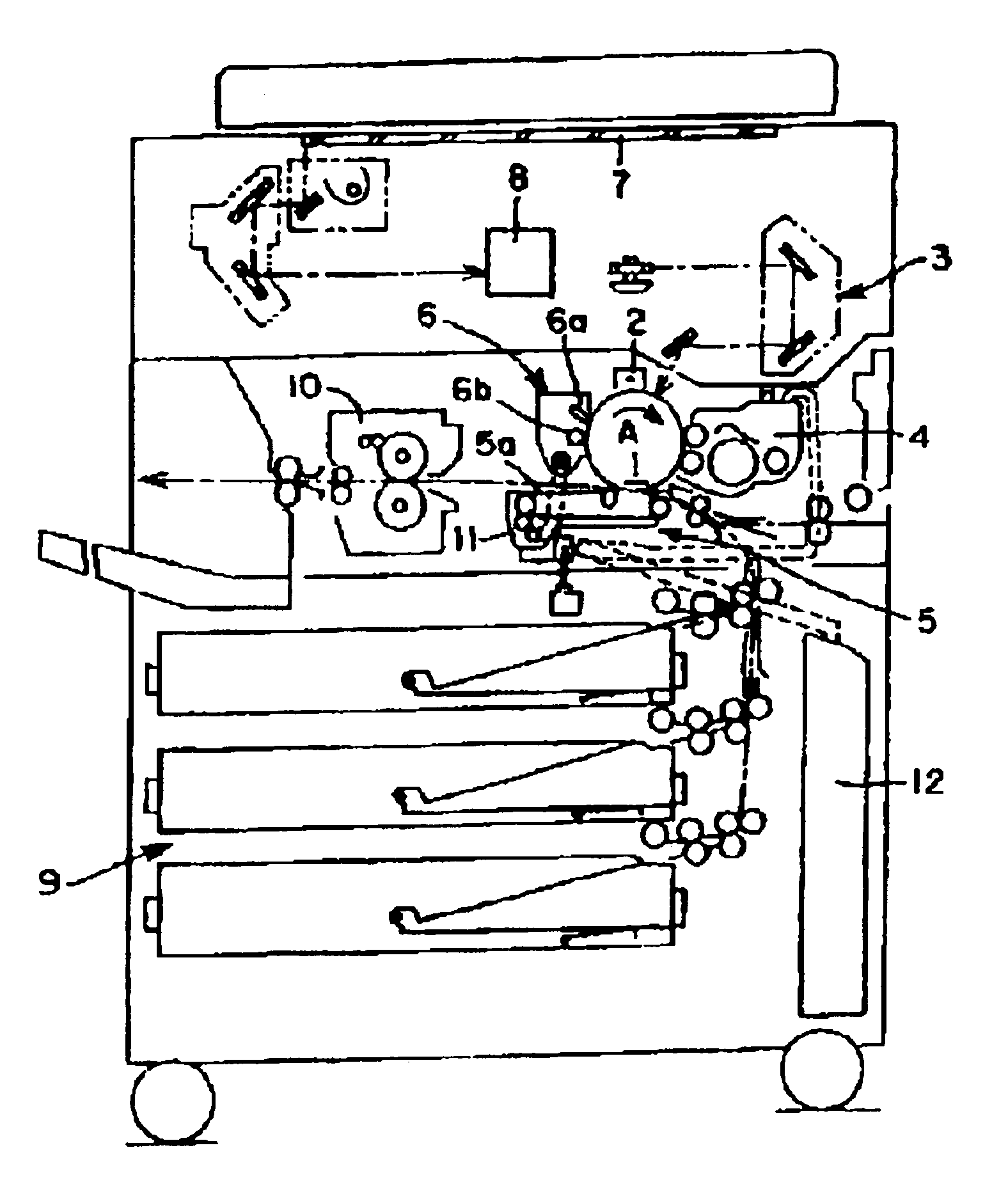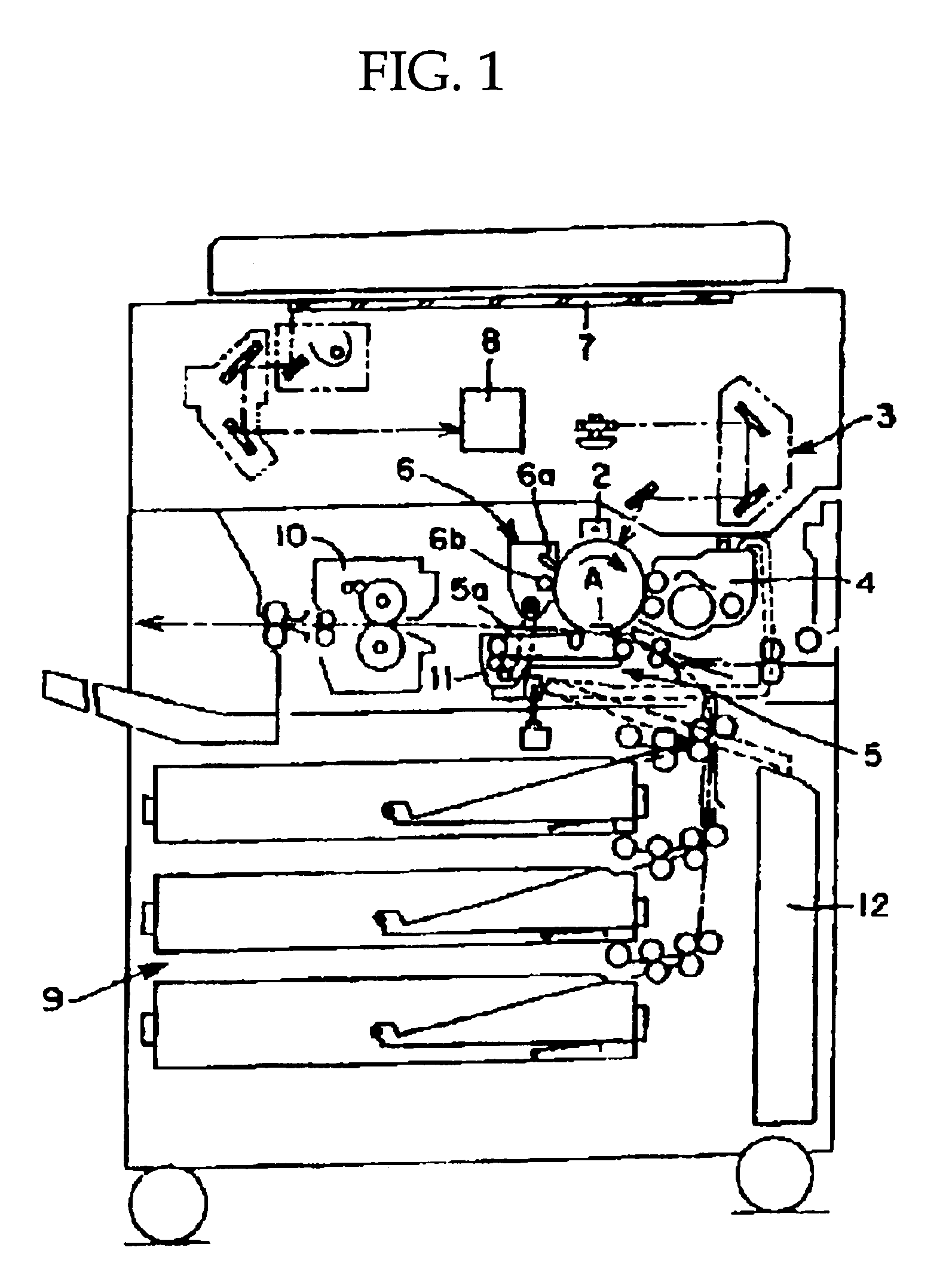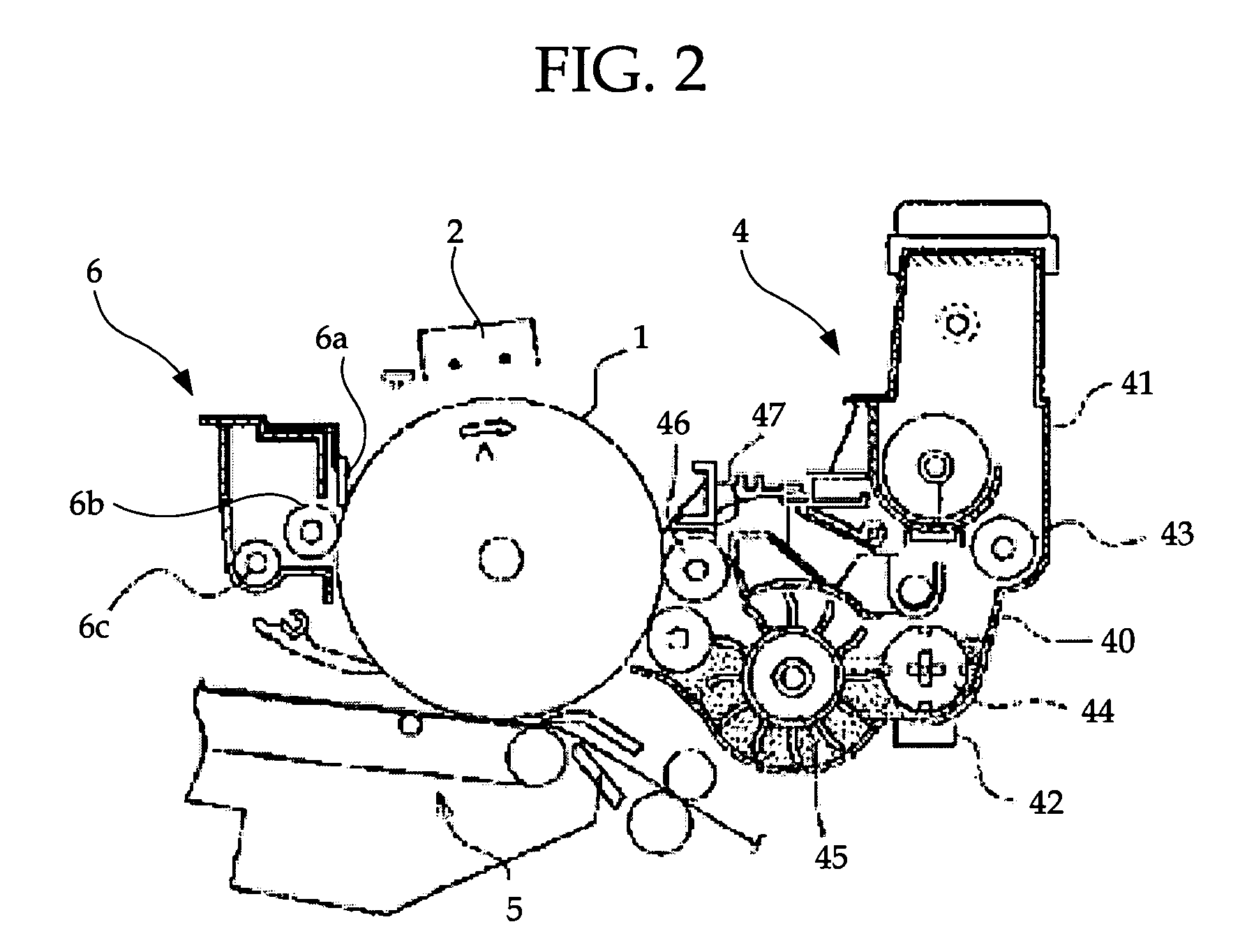Toner and image forming apparatus using the toner
a technology of toner and image forming apparatus, applied in the field of toner, can solve the problems of reducing the charge imparting ability of the carrier, reducing the image density, and reducing the durability and quality of the surface, so as to reduce the density of the image, the effect of less change in the surfa
- Summary
- Abstract
- Description
- Claims
- Application Information
AI Technical Summary
Problems solved by technology
Method used
Image
Examples
example 1
Preparation Example 1
Preparation of Organic Fine Particle Emulsion
[0217]In a reactor equipped with a stirring rod and a thermometer were placed 754 parts of water, 13 parts of a sodium salt of sulfuric acid ester of ethylene oxide adduct of methacrylic acid ELEMINOL RS-30 (trade name, available from Sanyo Chemical Industries, Ltd.,), 83 parts of styrene, 83 parts of methacrylic acid, 110 parts of butyl acrylate and 1 part of ammonium persulfate, and the mixture was stirred at 400 rpm for 15 minutes to yield a white emulsion. The emulsion was heated to an inner temperature of 75° C., followed by reaction for 5 hours. The reaction mixture was further treated with 30 parts of a 1% aqueous solution of ammonium persulfate, was aged at 75° C. for 5 hours and thereby yielded an aqueous dispersion [Polymer Fine Particle Dispersion 1] of a vinyl resin (a copolymer of styrene-methacrylic acid-butyl acrylate-sodium salt of sulfuric acid ester of ethylene oxide adduct of methacrylic acid). Fine...
preparation example 2
Preparation of Aqueous Phase
[0218]Aqueous Phase 1 was prepared as an opaque liquid by blending and stirring 990 parts of water, 80 parts of Fine Particle Dispersion 1, 40 parts of a 48.5% aqueous solution of sodium dodecyl diphenyl ether disulfonate ELEMINOL MON-7 (trade name, available from Sanyo Chemical Industries, Ltd.), and 90 parts of ethyl acetate.
preparation example 3
Preparation of Unmodified Polyester
[0219]In a reactor equipped with a condenser, a stirrer and a nitrogen gas feed tube were placed 570 parts of an ethylene oxide (2 mole) adduct of bisphenol A, 217 parts of terephthalic acid and 2 parts of dibutyltin oxide. The mixture was reacted at 230° C. at normal atmospheric pressure for 8 hours and was further reacted at a reduced pressure of 10 to 15 mmHg for 5 hours. After cooling to 110° C., the reaction mixture was further treated with 18 parts of trimellitic anhydride for 2 hours and thereby yielded Unmodified Polyester 1 (PE 1).
PUM
| Property | Measurement | Unit |
|---|---|---|
| number-average particle diameter Dn | aaaaa | aaaaa |
| glass transition point Tg | aaaaa | aaaaa |
| volume average particle diameter | aaaaa | aaaaa |
Abstract
Description
Claims
Application Information
 Login to View More
Login to View More - R&D
- Intellectual Property
- Life Sciences
- Materials
- Tech Scout
- Unparalleled Data Quality
- Higher Quality Content
- 60% Fewer Hallucinations
Browse by: Latest US Patents, China's latest patents, Technical Efficacy Thesaurus, Application Domain, Technology Topic, Popular Technical Reports.
© 2025 PatSnap. All rights reserved.Legal|Privacy policy|Modern Slavery Act Transparency Statement|Sitemap|About US| Contact US: help@patsnap.com



